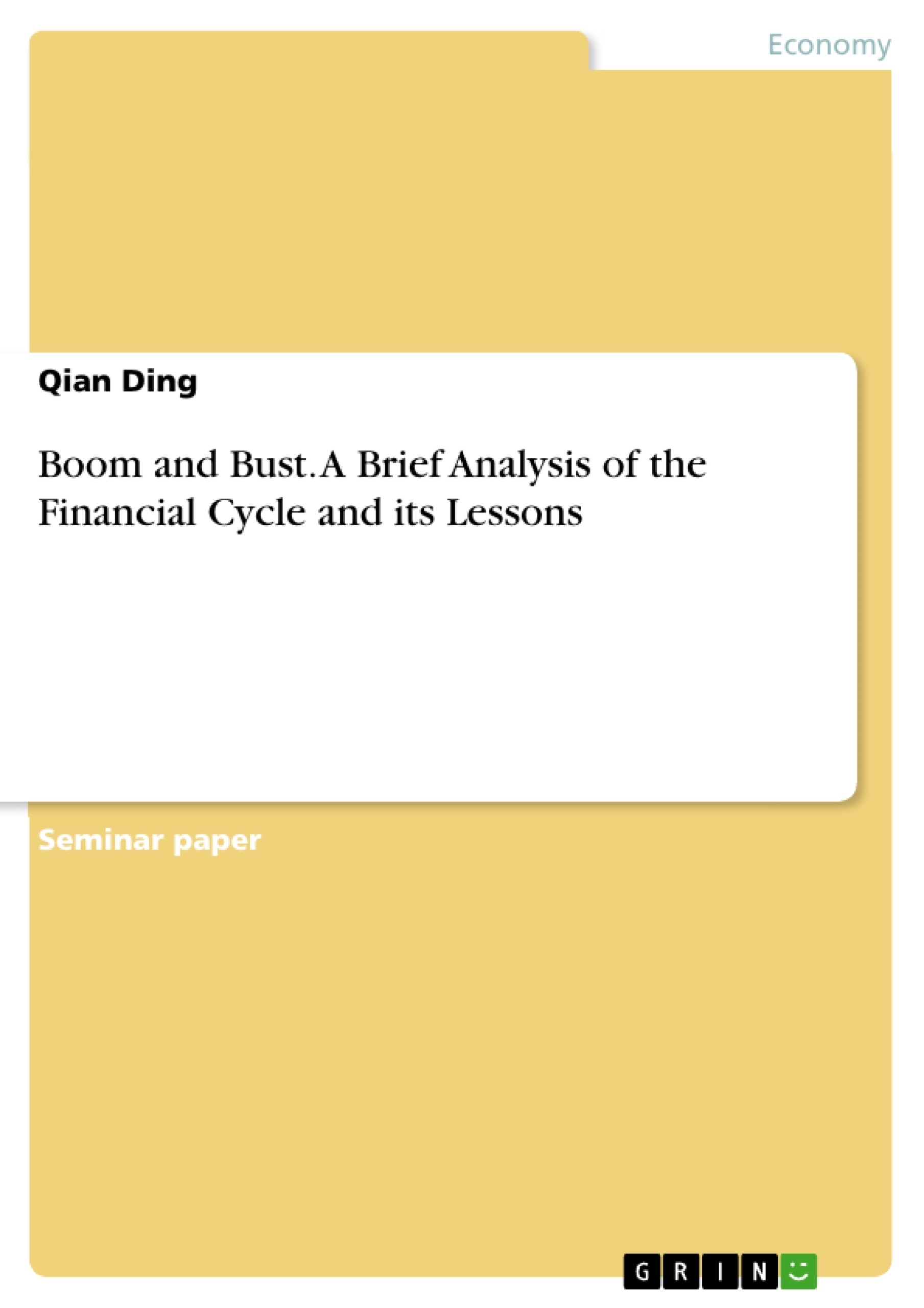This paper mainly analyzes the implications of the financial cycle and its interactions with the traditional business cycle. Using frequency-based filter and turning-point analysis to measure duration, amplitude and evolution of the financial cycle it is shown, that the results of both approaches for the financial cycle are similar and fit the actual dates well.
Further, it is found find that although financial and economic cycles are completely different, they are closely related.The financial cycle significantly amplifies fluctuations in the real economy. Other issues such like optimal monetary and fiscal policies and potential warning indicators are also analyzed.
Table of Contents
List of Tables/Figures
1. Introduction
2. Theory of the Financial Cycle
2.1 Identification of the Financial Cycle: Measurement and Empirical Regularities
2.1.1 Indicators and Approaches
2.1.2 Basic Features and Characteristics
2.2 Financial Cycle and Business Cycle: Interactions
3. The Financial Cycle: Challenges and Implications
3.1 Theoretical Derivation and Reflections
3.2 Challenges, Warnings and Coping Strategies
4. Conclusions
References
Annex Table
- Quote paper
- Qian Ding (Author), 2019, Boom and Bust. A Brief Analysis of the Financial Cycle and its Lessons, Munich, GRIN Verlag, https://www.grin.com/document/512067
-

-

-

-
Upload your own papers! Earn money and win an iPhone X. -

-
Upload your own papers! Earn money and win an iPhone X. -

-
Upload your own papers! Earn money and win an iPhone X. -

-
Upload your own papers! Earn money and win an iPhone X. -

-
Upload your own papers! Earn money and win an iPhone X. -

-
Upload your own papers! Earn money and win an iPhone X. -

-
Upload your own papers! Earn money and win an iPhone X. -

-
Upload your own papers! Earn money and win an iPhone X. -

-
Upload your own papers! Earn money and win an iPhone X.

